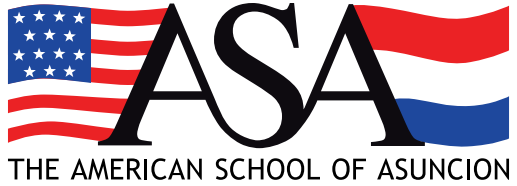
Arts
Philosophy
Art Educators at ASA enable students to realize their full potential. We encourage students to think through and within materials; selecting materials that maximize the student’s power of discovery and expression. Student choice is always emphasized. Students develop as artists through exposure to a wide variety of materials and approaches, and by exploring self-expression through their choices. We believe that art education is a continuous investigation of materials, processes, and personal vision. Art educators teach “seeing” techniques at ASA, such as color theory, in an effort to optimize the visual experiences of students. We aim to make students conscious of the shapes and colors in the world, and how these elements can be manipulated to produce emotion or understanding.
The goal of the ASA Art Department is that every student develop an appreciation of art and become a well-rounded, respectful, life-long learner. By studying the world around them through art, students make connections between themselves and other cultures past and present, fostering the journey toward becoming a global citizen. Art reflects society, and through access to technology, students connect historically to contemporary artworks in order to develop a personal meaning of their world. Our curriculum is organized around the AERO Standards for Art.
Art Program
Elementary Program
The focus in Elementary Art is learning to enjoy, appreciate, and create art. We look at different styles, cultures, and periods of art, as well as create our own masterpieces inspired by the elements of art, principles of design, and famous artists. Furthermore, students are exposed to different artistic practices around the world and learn how to connect those to their own culture. Art not only encourages students to express their emotions in individual ways, uses critical thinking and problem-solving skills which are not always developed in other subjects.
We begin the school year by practicing foundational skills that help students create more complex projects later on. Students are exposed to a variety of both 2D and 3D media and learn how to speak about their work and that of their classmates in positive, affirming ways. At least once a semester students will complete an art project that is connected thematically to some idea being explored in the regular classroom. Each Pre-K-5 student will have an art class once a week. Students sit in groups at tables, which gives them many opportunities to practice sharing materials in a safe and respectful manner.
Secondary Program
In Middle and High School the art curriculum is more focused on art itself. Through various techniques and media, students learn the elements and principles of art and gain insights about artists and art history. Students research topics in art to contribute to class discussions on the subject. Each student keeps a portfolio of work, where they can follow their development as artists, and refine their sense of an individual artistic voice.
Different media and techniques are developed through the year as well as the use of structures such as sensory qualities, qualities that are experienced through the senses, contained in the elements of art: line, color, value, texture, shape, form and scale; organizational principles that represent in art how the artist uses the elements of art to create and effect: balance, contrast, emphasis, movement, pattern, rhythm and unity, and expressive features to create emotions, indicate meaning or feelings in their artwork.
In Middle School, students take three required semester courses in Art. They will study: drawing, painting, paper and balsa foam sculpture, printmaking, weaving, ceramic, metal relief, and glass painting. In High School, the focus is on acquiring the depth and variety of skills to successfully take an AP Drawing course and exam. HS students will create an AP Drawing portfolio, and study: perspective, principles of art, oils, acrylic, watercolor, ceramic, and printmaking.
